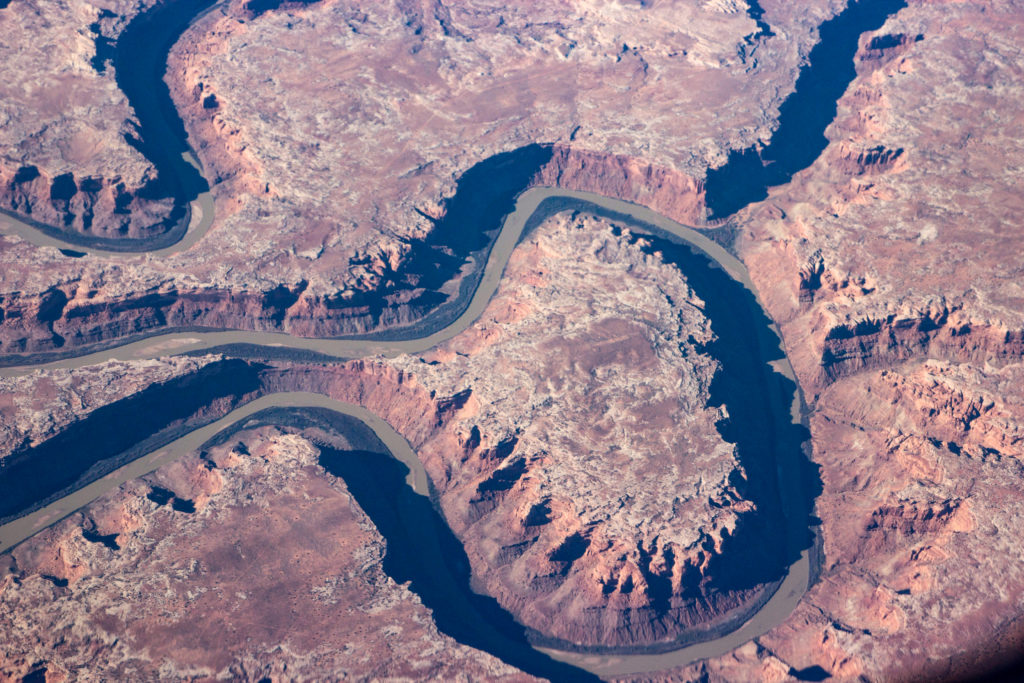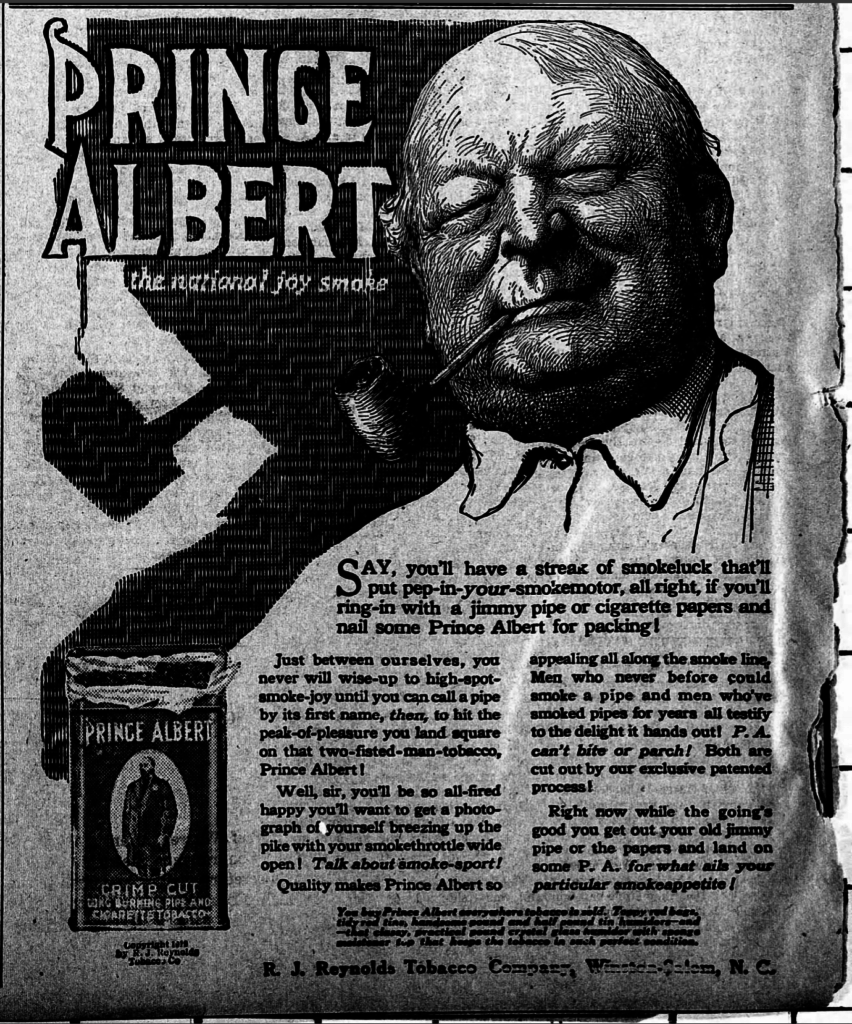Above, a shot from a flight from Nashville to Oakland in April 2016. I always take a window seat. I hardly ever watch the in-flight movies. The the window is my in-flight movie.
Every once in a while, I’ll actually get a half-decent picture of some dramatic piece of landscape. I was reasonably sure that this was the Green River someplace in eastern Utah. Checking Google Maps and Gmaps Pedometer, this place is 25 miles due west of Moab and 28 miles south-southeast of Green River, Utah. The perspective is looking north from just south of the bend.
Here’s the spot on Google Earth’s satellite view: www.google.com/maps/@38.6054343,-110.0189264,9139m/data=!…
Here’s a U.S. Geological Survey map of the area: www.gmap-pedometer.com/?r=6925846
Here’s a NASA Earth Observatory image, shot from the north, looking south: earthobservatory.nasa.gov/IOTD/view.php?id=83353
From the NASA writeup: “Bowknot was named by geologist John Wesley Powell in 1869 during one of his famous explorations of the rivers in the American West. The Green River flows south (toward the top of this image) and joins the Colorado River downstream. The combined flow of these rivers was responsible for cutting the Grand Canyon, some 325 kilometers (200 miles) away from Bowknot.”
And finally, here’s Powell’s journal entry, dated July 15, 1869, of traveling down this stretch of the Green River:
About six miles below noon camp we go around a great bend to the right, five miles in length, and come back to a point within a quarter of a mile of where we started. Then we sweep around another great bend to the left, making a circuit of nine miles, and come back to a point within six hundred yards of the beginning of the bend. In the two circuits we describe almost the figure 8. The men call it a bow knot of river so we name it Bow knot Bend. The line of the figure is fourteen miles in length.
There is an exquisite charm in our ride to day down this beautiful cañon. It gradually grows deeper with every mile of travel; the walls are symmetrically curved, and grandly arched; of a beautiful color, and reflected in the quiet waters in many places, so as to almost deceive the eye and suggest the thought, to the beholder, that he is looking into profound depths. We are all in fine spirits, feel very gay, and the badinage of the men is echoed from wall to wall. Now and then we whistle, or shout, or discharge a pistol, to listen to the reverberations among the cliffs.
At night we camp on the south side of the great Bow knot, and, as we eat our supper, which is spread on the beach, we name this Labyrinth Cañon.


